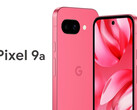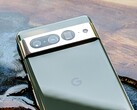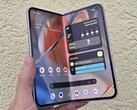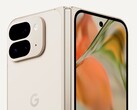
The best foldable photo smartphone? Google Pixel 9 Pro Fold review
A loss of individuality.
The Pixel 9 Pro Fold is much thinner and lighter than its predecessor, but the foldable phone still has improved performance in its sights. Unfortunately, Google has decided to let its foldable phone follow the mainstream rather than stay true to its unique form factor.Marcus Herbrich, 👁 Daniel Schmidt (translated by Andrew Dickson) Published 🇩🇪 🇫🇷 ...
Google Pixel 9 Pro Fold verdict
The Pixel 9 Pro Fold is considerably more modern than the Pixel Fold. Google's foldable smartphone has slimmed down noticeably, has a very appealing folding mechanism and now uses the latest communication standards. But this slimming down has also led to compromises. In particular, the small camera sensors don't really fit into the Google phone's price range, which means that the Pixel 9 Pro Fold is quite limited in low light - even Google's algorithms cannot overcome the limits of physics. Unfortunately, the manufacturer has said goodbye to its previous form factor, which could have helped the Pixel 9 Pro Fold stand out more from the crowd.
A look at the Chinese competition, such as a Xiaomi Mix Fold 4 or Honor Magic V3, also reveals that the foldable Pixel phones still have plenty of room for future improvements. In particular, the weight and thick bezels make the Pixel 9 Pro Fold look like a relic from a previous generation of foldable phones. Google should also rethink the lack of pen support for its Pixel 10 Pro Fold - something the Galaxy Z Fold6 offers.
Pros
Cons
Price and availability
The Google Pixel 9 Pro Fold starts with an RRP of $1,499 with 256 GB of storage and can be purchased directly from the manufacturer. Anyone with an eye on the 512 GB version will have to fork out $1,619.
Possible alternatives compared
Image | Model / Review | Geizhals | Weight | Drive | Display |
|---|---|---|---|---|---|
| Google Pixel 9 Pro Fold Google Tensor G4 ⎘ ARM Mali-G715 MP7 ⎘ 16 GB Memory, 256 GB | 257 g | 256 GB UFS 3.1 Flash | 8.00" 2152x2076 374 PPI OLED LTPO | ||
| Xiaomi Mix Fold 4 Qualcomm Snapdragon 8 Gen 3 ⎘ Qualcomm Adreno 750 ⎘ 12 GB Memory, 512 GB | Listenpreis 1250€ | 226 g | 512 GB UFS 4.0 Flash | 7.98" 2488x2224 418 PPI AMOLED LPTO | |
| Vivo X Fold3 Qualcomm Snapdragon 8 Gen 2 ⎘ Qualcomm Adreno 740 ⎘ 16 GB Memory, 1024 GB | Listenpreis 1200€ | 219 g | 1 TB UFS 4.0 Flash | 8.03" 2480x2200 413 PPI AMOLED | |
| Samsung Galaxy Z Fold6 Qualcomm Snapdragon 8 Gen 3 for Galaxy ⎘ Qualcomm Adreno 750 ⎘ 12 GB Memory, 512 GB | Listenpreis 2119€ | 239 g | 512 GB UFS 4.0 Flash | 7.60" 2160x1856 375 PPI AMOLED, HDR - HDR10+, HGL, 2nd Screen: 6.3", 2376x968, Glass Victus 2 | |
| Honor Magic V3 Qualcomm Snapdragon 8 Gen 3 ⎘ Qualcomm Adreno 750 ⎘ 12 GB Memory, 512 GB | 226 g | 512 GB UFS 4.0 Flash | 7.92" 2344x2156 402 PPI OLED | ||
| Google Pixel Fold Google Tensor G2 ⎘ ARM Mali-G710 MP7 ⎘ 12 GB Memory, 256 GB | Listenpreis 1899€ | 283 g | 256 GB UFS 3.1 Flash | 7.60" 2208x1840 378 PPI OLED |
Table of Contents
- Google Pixel 9 Pro Fold verdict
- Google Pixel 9 Pro Fold specifications
- Case - The Pixel 9 Pro Fold comes with IP certification
- Features - The Google phone has USB 3.2
- Software - The Pixel 9 Pro Fold offers long updates
- Communikation und GNSS - The Google phone comes with 5G
- Telephone functions and voice quality - The Pixel 9 Pro Fold is eSIM compatible
- Cameras - Good photos for a foldable
- Accessories and warranty - The Pixel 9 Pro Fold comes without a charger
- Input devices & operation - The Google phone has Face Unlock
- Foldable display - The Pixel 9 Pro Fold has a bright OLED
- External display - A Google phone with a second OLED screen
- Performance - The Pixel 9 Pro Fold has its own SoC
- Emissions - The Google phone throttles moderately
- Battery run times - The Pixel phone is Qi-certified
- Notebookcheck overall rating
Like its Pixel 9 Pro Fold brother, this handest relies on the Google Tensor G4 and 16 GB of RAM. With a significantly thinner design than its predecessor, Google wants to be among the best in class in the foldable segment. Find out in the following review sections whether or not the successor to the Pixel Fold succeeds.
Google Pixel 9 Pro Fold specifications
Case - The Pixel 9 Pro Fold comes with IP certification
At 5.1 millimeters, the Pixel 9 Pro Fold is significantly thinner than its predecessor. In addition, the foldable smartphone is quite a bit lighter, although the Galaxy Z Fold6 is noticeably lighter than the Pixel 9 Pro Fold itself. The case consists of scratch-resistant Corning Gorilla Glass Victus 2 and is water-resistant according to the IPX8 standard — however, the Pixel phone is neither water nor dustproof. Due to the wide bezels around the 8-inch OLED panel, the display surface ratio of 89 percent is not particularly efficient for a foldable. But the screen edges are also pronounced on the front.
The build quality is very good, and the Pixel 9 Pro Fold doesn't lack anything in terms of quality, either. Google has done a good job regarding the new hinge design. The latter seems very robust and allows the foldable OLED screen to be used at almost any angle.
Features - The Google phone has USB 3.2
The Google phone comes with Bluetooth 5.3, USB OTG, NFC, a UWB chip, as well as Miracast and Google Cast. The manufacturer offers neither a 1 TB version nor an infrared thermometer for its foldable, although the Pro models have access to them. Thanks to the fast USB standard (3.2 Gen. 1), which supports wired image output to HDMI or DisplayPort interfaces, we achieved solid transfer speeds of 132 MB/s in our copy test with a Samsung 980 Pro (M2.SSD hard drive). The connected storage media can be formatted with NTFS (read-only) or exFAT.
Software - The Pixel 9 Pro Fold offers long updates
Sustainability
The Google Pixel 9 Pro Fold comes with plastic-free packaging. According to the manufacturer, only recycled aluminum has been used, and the foldable phone consists of 18 percent recycled materials. Google has also provided a complete sustainability report.
Communikation und GNSS - The Google phone comes with 5G
The Google phone uses the fast WiFi 7 standard, including MU-MIMO and 6 GHz band support. In our measurements, we achieved a high and constant transmission speed when paired with the Asus ROG Rapture GT-AXE11000. The Pixel 9 Pro Fold also has everything you need for mobile internet access both on these shores and also when travelling - including access to the 5G and 4G networks and a very wide range of frequencies. The foldable phone even uses 5G mmWave.
| Networking | |
| Google Pixel 9 Pro Fold | |
| iperf3 transmit AXE11000 | |
| iperf3 receive AXE11000 | |
| iperf3 transmit AXE11000 6GHz | |
| iperf3 receive AXE11000 6GHz | |
| Xiaomi Mix Fold 4 | |
| iperf3 transmit AXE11000 | |
| iperf3 receive AXE11000 | |
| iperf3 transmit AXE11000 6GHz | |
| iperf3 receive AXE11000 6GHz | |
| Vivo X Fold3 | |
| iperf3 transmit AXE11000 | |
| iperf3 receive AXE11000 | |
| Samsung Galaxy Z Fold6 | |
| iperf3 transmit AXE11000 | |
| iperf3 receive AXE11000 | |
| iperf3 transmit AXE11000 6GHz | |
| iperf3 receive AXE11000 6GHz | |
| Honor Magic V3 | |
| iperf3 transmit AXE11000 | |
| iperf3 receive AXE11000 | |
| Google Pixel Fold | |
| iperf3 transmit AXE11000 | |
| iperf3 receive AXE11000 | |
| iperf3 transmit AXE11000 6GHz | |
| iperf3 receive AXE11000 6GHz | |
| Average Wi-Fi 7 | |
| iperf3 transmit AXE11000 | |
| iperf3 receive AXE11000 | |
| iperf3 transmit AXE11000 6GHz | |
| iperf3 receive AXE11000 6GHz | |
| Average of class Smartphone | |
| iperf3 transmit AXE11000 | |
| iperf3 receive AXE11000 | |
| iperf3 transmit AXE11000 6GHz | |
| iperf3 receive AXE11000 6GHz | |
Telephone functions and voice quality - The Pixel 9 Pro Fold is eSIM compatible
Cameras - Good photos for a foldable
A 10 MPix autofocus lens is hidden inside a punch hole underneath the foldable's OLED display and also on the front. Photos look almost identical with both cameras. However, the main camera and the front panel can also be used as a viewfinder for selfies when opened.
The Pixel 9 Pro Fold's rear camera system delivers good photos for a foldable phone, but the small sensors quickly reach their limits in the dark. Even the 48 MPix main camera, which impresses with good dynamic range and solid sharpness in daylight, has to accept shortcomings at night with the now almost tiny 1/2.0-inch sensor.
The ultra-wide-angle camera comes with macro focus and both it and the telephoto lens (lossless five-fold zoom) are also very solid. However, we reckon the captured images lack a few details considering the price range.
Image comparison
Choose a scene and navigate within the first image. One click changes the position on touchscreens. One click on the zoomed-in image opens the original in a new window. The first image shows the scaled photograph of the test device.
Main cameraMain cameraLow lightUltra-wide-angleZoom 5x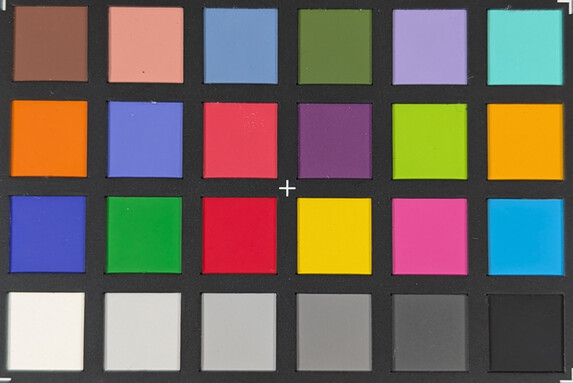

Accessories and warranty - The Pixel 9 Pro Fold comes without a charger
The foldable comes without a power supply or a suitable case. However, a data or charging cable (USB-C to USB-C, 2.0) and a SIM tool are included. Google also offers optional accessories for the Pixel 9 Pro Fold, such as a protective case.
In Germany, the manufacturer's foldable comes with a 24-month warranty.
Input devices & operation - The Google phone has Face Unlock
The two capacitive touchscreens respond quickly, and image changes are displayed smoothly, thanks to the 120 Hz panel. Unfortunately, the Google Foldable doesn't support pen input. The Pixel 9 Pro Fold benefits from responsive vibrations using a linear electric motor. Samsung's well-known Flex mode, an expanded screen option when folded, is also possible.
Unfortunately, Google hasn't stayed true to its old aspect ratio and now uses a 20:9 panel for the Pixel 9 Pro Fold's cover display. Although the Pixel Fold had a 17.4:9 screen (when opened) and an almost tablet-like ratio, the successor has a now familiar, almost square display format. Any potential buyers should, therefore, be aware that the 8-inch screen is less suitable for many apps due to its unusual aspect ratio.
Biometric security is provided by a 2D face unlock function with the help of both 10 MPix cameras or a fingerprint sensor in the on/off button. In our tests, both methods unlocked the device quickly and reliably.
Foldable display - The Pixel 9 Pro Fold has a bright OLED
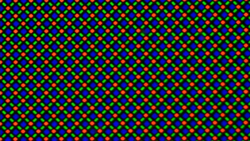
The 8-inch Super Actua Flex display has a pixel density of 374 ppi which is slightly lower than the competition. However, the displayed font still appears sharp enough. The foldable screen is an LTPO panel that can adjust its refresh rate to between 1 and 120 Hz. In our measurements, the Pixel 9 Pro Fold achieved a peak brightness of 2,684 cd/m² (APL18), which corresponds almost exactly to Google's specifications (2,700 nits).
Unfortunately, when looking at the OLED panel, your eyes are confronted with low-frequency PWM flickering, which operates at 240 Hz. At 24 percent, the PWM's amplitude is also relatively unpleasant for a 120 Hz AMOLED screen.
| |||||||||||||||||||||||||
Brightness Distribution: 66 %
Center on Battery: 1793 cd/m²
Contrast: ∞:1 (Black: 0 cd/m²)
ΔE ColorChecker Calman: 0.9 | ∀{0.5-29.43 Ø4.78}
ΔE Greyscale Calman: 1.7 | ∀{0.09-98 Ø5}
98.5% sRGB (Calman 2D)
Gamma: 2.19
CCT: 6714 K
| Google Pixel 9 Pro Fold OLED LTPO, 2152x2076, 8" | Xiaomi Mix Fold 4 AMOLED LPTO, 2488x2224, 8" | Vivo X Fold3 AMOLED, 2480x2200, 8" | Samsung Galaxy Z Fold6 AMOLED, HDR - HDR10+, HGL, 2nd Screen: 6.3", 2376x968, Glass Victus 2, 2160x1856, 7.6" | Honor Magic V3 OLED, 2344x2156, 7.9" | Google Pixel Fold OLED, 2208x1840, 7.6" | |
|---|---|---|---|---|---|---|
| Screen | -75% | 17% | -10% | -3% | -21% | |
| Brightness middle (cd/m²) | 1793 | 1111 -38% | 1793 0% | 1396 -22% | 1019 -43% | 993 -45% |
| Brightness (cd/m²) | 1599 | 1120 -30% | 1806 13% | 1387 -13% | 1032 -35% | 997 -38% |
| Brightness Distribution (%) | 66 | 99 50% | 99 50% | 89 35% | 95 44% | 94 42% |
| Black Level * (cd/m²) | ||||||
| Colorchecker dE 2000 * | 0.9 | 3.42 -280% | 0.9 -0% | 1.7 -89% | 1 -11% | 1.4 -56% |
| Colorchecker dE 2000 max. * | 3.1 | 5.92 -91% | 2.1 32% | 2.5 19% | 2.2 29% | 3.2 -3% |
| Greyscale dE 2000 * | 1.7 | 2.7 -59% | 1.6 6% | 1.5 12% | 1.7 -0% | 2.1 -24% |
| Gamma | 2.19 100% | 2.206 100% | 2.2 100% | 2.16 102% | 2.26 97% | 2.24 98% |
| CCT | 6714 97% | 7081 92% | 6595 99% | 6495 100% | 6473 100% | 6796 96% |
* ... smaller is better
Screen Flickering / PWM (Pulse-Width Modulation)
| Screen flickering / PWM detected | 120 Hz Amplitude: 24.04 % Secondary Frequency: 240 Hz | ||
The display backlight flickers at 120 Hz (worst case, e.g., utilizing PWM) . The frequency of 120 Hz is very low, so the flickering may cause eyestrain and headaches after extended use. In comparison: 53 % of all tested devices do not use PWM to dim the display. If PWM was detected, an average of 8149 (minimum: 5 - maximum: 343500) Hz was measured. | |||
A series of measurements with fixed zoom levels and different brightness settings. The amplitude curve at minimum brightness looks flat, but this is due to the scaling. The enlarged version of the amplitude at minimum brightness can be seen in the info box.
The Flex OLED's color balance is very accurate. However, with only two predefined profiles and no white balance option, the Pixel 9 Pro Fold doesn't really look up-to-date.
Display Response Times
| ↔ Response Time Black to White | ||
|---|---|---|
| 1.04 ms ... rise ↗ and fall ↘ combined | ↗ 0.541 ms rise | |
| ↘ 0.498 ms fall | ||
| The screen shows very fast response rates in our tests and should be very well suited for fast-paced gaming. In comparison, all tested devices range from 0.1 (minimum) to 240 (maximum) ms. » 3 % of all devices are better. This means that the measured response time is better than the average of all tested devices (20.3 ms). | ||
| ↔ Response Time 50% Grey to 80% Grey | ||
| 5.95 ms ... rise ↗ and fall ↘ combined | ↗ 3.119 ms rise | |
| ↘ 2.828 ms fall | ||
| The screen shows very fast response rates in our tests and should be very well suited for fast-paced gaming. In comparison, all tested devices range from 0.165 (minimum) to 636 (maximum) ms. » 17 % of all devices are better. This means that the measured response time is better than the average of all tested devices (31.7 ms). | ||
External display - A Google phone with a second OLED screen

The external cover display doesn't have a dynamic OLED panel, but it also works at a maximum of 120 Hz and has a size of 6.24 inches. Compared to the main screen, the panel is a bit sharper (422 ppi) and we recorded a slightly higher peak brightness of 2,784 cd/m². The cover display is also not spared from flickering at a low frequency, which is not really suitable for sensitive user groups without high-frequency PWM dimming.
| Google Pixel 9 Pro Fold OLED LTPO, 2152x2076, 8" | Google Pixel 9 Pro Fold OLED, 2424x1080, 6.3" | Honor Magic V3 OLED, 2376x1060, 6.4" | Samsung Galaxy Z Fold6 AMOLED, 2376x968, 6.3" | Xiaomi Mix Fold 4 x, | |
|---|---|---|---|---|---|
| Screen | -7% | 11% | -57% | -77% | |
| Brightness middle (cd/m²) | 1793 | 2090 17% | 1743 -3% | 1363 -24% | 968 -46% |
| Brightness (cd/m²) | 1599 | 1876 17% | 1775 11% | 1369 -14% | 982 -39% |
| Brightness Distribution (%) | 66 | 77 17% | 88 33% | 94 42% | 96 45% |
| Black Level * (cd/m²) | |||||
| Colorchecker dE 2000 * | 0.9 | 1.5 -67% | 0.9 -0% | 3.3 -267% | 3.28 -264% |
| Colorchecker dE 2000 max. * | 3.1 | 3.5 -13% | 2.1 32% | 4.5 -45% | 5.77 -86% |
| Greyscale dE 2000 * | 1.7 | 1.9 -12% | 1.8 -6% | 2.3 -35% | 2.9 -71% |
| Gamma | 2.19 100% | 2.25 98% | 2.25 98% | 2.06 107% | 2.238 98% |
| CCT | 6714 97% | 6676 97% | 6353 102% | 6633 98% | 7095 92% |
* ... smaller is better
A series of measurements with fixed zoom levels and different brightness settings. The amplitude curve at minimum brightness looks flat, but this is due to the scaling. The enlarged version of the amplitude at minimum brightness can be seen in the info box.
Performance - The Pixel 9 Pro Fold has its own SoC
The Pixel 9 Pro Fold is powered by the in-house Tensor G4 and 16 GB of RAM. The system runs smoothly in everyday situations, but performance-wise, Google hasn't managed to hit it out of the park. Even the Vivo X Fold3 and its Snapdragon 8 Gen 2 offer more CPU power, especially multi-core.
The integrated Mali-G715 MP7 graphics chip also performs at the level of a mid-range smartphone. Additionally, the GPU doesn't support hardware-based ray tracing. Google claims to have worked with various game developers to optimize the large inner display, but there is not much evidence of this in everyday use since many games are displayed with wide black borders.
| UL Procyon AI Inference for Android - Overall Score NNAPI | |
| Google Pixel Fold | |
| Average Google Tensor G4 (35227 - 42062, n=5) | |
| Google Pixel 9 Pro Fold | |
| Average of class Smartphone (3769 - 81594, n=137, last 2 years) | |
| Xiaomi Mix Fold 4 | |
| Samsung Galaxy Z Fold6 | |
| Vivo X Fold3 | |
| Honor Magic V3 | |
| Geekbench ML | |
| 0.6 TensorFlow Lite CPU | |
| Samsung Galaxy Z Fold6 | |
| Average of class Smartphone (267 - 1342, n=31, last 2 years) | |
| 0.6 TensorFlow Lite GPU | |
| Samsung Galaxy Z Fold6 | |
| Average of class Smartphone (123 - 1478, n=31, last 2 years) | |
| 0.6 TensorFlow Lite NNAPI | |
| Average of class Smartphone (186 - 3410, n=27, last 2 years) | |
| Samsung Galaxy Z Fold6 | |
| Geekbench AI | |
| Single Precision TensorFlow NNAPI 1.1 | |
| Average of class Smartphone (122 - 4122, n=41, last 2 years) | |
| Average Google Tensor G4 (376 - 771, n=4) | |
| Xiaomi Mix Fold 4 | |
| Honor Magic V3 | |
| Honor Magic V3 | |
| Google Pixel 9 Pro Fold | |
| Half Precision TensorFlow NNAPI 1.1 | |
| Average Google Tensor G4 (4176 - 4754, n=4) | |
| Google Pixel 9 Pro Fold | |
| Average of class Smartphone (122 - 32120, n=41, last 2 years) | |
| Xiaomi Mix Fold 4 | |
| Honor Magic V3 | |
| Honor Magic V3 | |
| Quantized TensorFlow NNAPI 1.1 | |
| Average Google Tensor G4 (6269 - 6451, n=4) | |
| Google Pixel 9 Pro Fold | |
| Average of class Smartphone (118 - 44381, n=41, last 2 years) | |
| Honor Magic V3 | |
| Honor Magic V3 | |
| Xiaomi Mix Fold 4 | |
GFXBench (DX / GLBenchmark) 2.7: T-Rex Onscreen | 1920x1080 T-Rex Offscreen
GFXBench 3.0: on screen Manhattan Onscreen OGL | 1920x1080 1080p Manhattan Offscreen
GFXBench 3.1: on screen Manhattan ES 3.1 Onscreen | 1920x1080 Manhattan ES 3.1 Offscreen
GFXBench: on screen Car Chase Onscreen | 1920x1080 Car Chase Offscreen | on screen Aztec Ruins High Tier Onscreen | 2560x1440 Aztec Ruins High Tier Offscreen | on screen Aztec Ruins Normal Tier Onscreen | 1920x1080 Aztec Ruins Normal Tier Offscreen | 3840x2160 4K Aztec Ruins High Tier Offscreen
| 3DMark / Wild Life Extreme Unlimited | |
| Samsung Galaxy Z Fold6 | |
| Xiaomi Mix Fold 4 | |
| Honor Magic V3 | |
| Vivo X Fold3 | |
| Google Pixel 9 Pro Fold | |
| Google Pixel Fold | |
| 3DMark / Wild Life Extreme | |
| Honor Magic V3 | |
| Xiaomi Mix Fold 4 | |
| Samsung Galaxy Z Fold6 | |
| Vivo X Fold3 | |
| Google Pixel 9 Pro Fold | |
| Google Pixel Fold | |
| 3DMark / Wild Life Unlimited Score | |
| Honor Magic V3 | |
| Samsung Galaxy Z Fold6 | |
| Xiaomi Mix Fold 4 | |
| Vivo X Fold3 | |
| Google Pixel 9 Pro Fold | |
| Google Pixel Fold | |
| 3DMark / Wild Life Score | |
| Vivo X Fold3 | |
| Google Pixel Fold | |
| Honor Magic V3 | |
| 3DMark / Solar Bay Score | |
| Xiaomi Mix Fold 4 | |
| Honor Magic V3 | |
| Samsung Galaxy Z Fold6 | |
| Vivo X Fold3 | |
| 3DMark / Solar Bay Unlimited Score | |
| Honor Magic V3 | |
| Samsung Galaxy Z Fold6 | |
| Xiaomi Mix Fold 4 | |
| Vivo X Fold3 | |
| 3DMark / Steel Nomad Light Unlimited Score | |
| Xiaomi Mix Fold 4 | |
| Samsung Galaxy Z Fold6 | |
| Honor Magic V3 | |
| Google Pixel 9 Pro Fold | |
| 3DMark / Steel Nomad Light Score | |
| Honor Magic V3 | |
| Honor Magic V3 | |
| Xiaomi Mix Fold 4 | |
| Samsung Galaxy Z Fold6 | |
| Google Pixel 9 Pro Fold | |
| 3DMark / Sling Shot Extreme (ES 3.1) Unlimited Physics | |
| Vivo X Fold3 | |
| Google Pixel 9 Pro Fold | |
| Samsung Galaxy Z Fold6 | |
| Google Pixel Fold | |
| Honor Magic V3 | |
| 3DMark / Sling Shot Extreme (ES 3.1) Unlimited Graphics | |
| Samsung Galaxy Z Fold6 | |
| Vivo X Fold3 | |
| Honor Magic V3 | |
| Google Pixel 9 Pro Fold | |
| Google Pixel Fold | |
| 3DMark / Sling Shot Extreme (ES 3.1) Unlimited | |
| Samsung Galaxy Z Fold6 | |
| Vivo X Fold3 | |
| Google Pixel 9 Pro Fold | |
| Honor Magic V3 | |
| Google Pixel Fold | |
| GFXBench (DX / GLBenchmark) 2.7 / T-Rex Onscreen | |
| Google Pixel Fold | |
| Xiaomi Mix Fold 4 | |
| Samsung Galaxy Z Fold6 | |
| Google Pixel 9 Pro Fold | |
| Vivo X Fold3 | |
| Honor Magic V3 | |
| GFXBench (DX / GLBenchmark) 2.7 / T-Rex Offscreen | |
| Xiaomi Mix Fold 4 | |
| Vivo X Fold3 | |
| Honor Magic V3 | |
| Google Pixel 9 Pro Fold | |
| Samsung Galaxy Z Fold6 | |
| Google Pixel Fold | |
| GFXBench 3.0 / Manhattan Onscreen OGL | |
| Xiaomi Mix Fold 4 | |
| Samsung Galaxy Z Fold6 | |
| Vivo X Fold3 | |
| Google Pixel 9 Pro Fold | |
| Google Pixel Fold | |
| Honor Magic V3 | |
| GFXBench 3.0 / 1080p Manhattan Offscreen | |
| Xiaomi Mix Fold 4 | |
| Google Pixel 9 Pro Fold | |
| Vivo X Fold3 | |
| Samsung Galaxy Z Fold6 | |
| Honor Magic V3 | |
| Google Pixel Fold | |
| GFXBench 3.1 / Manhattan ES 3.1 Onscreen | |
| Samsung Galaxy Z Fold6 | |
| Vivo X Fold3 | |
| Xiaomi Mix Fold 4 | |
| Google Pixel 9 Pro Fold | |
| Honor Magic V3 | |
| Google Pixel Fold | |
| GFXBench 3.1 / Manhattan ES 3.1 Offscreen | |
| Xiaomi Mix Fold 4 | |
| Samsung Galaxy Z Fold6 | |
| Vivo X Fold3 | |
| Honor Magic V3 | |
| Google Pixel 9 Pro Fold | |
| Google Pixel Fold | |
| GFXBench / Car Chase Onscreen | |
| Samsung Galaxy Z Fold6 | |
| Vivo X Fold3 | |
| Xiaomi Mix Fold 4 | |
| Honor Magic V3 | |
| Google Pixel 9 Pro Fold | |
| Google Pixel Fold | |
| GFXBench / Car Chase Offscreen | |
| Xiaomi Mix Fold 4 | |
| Vivo X Fold3 | |
| Honor Magic V3 | |
| Samsung Galaxy Z Fold6 | |
| Google Pixel 9 Pro Fold | |
| Google Pixel Fold | |
| GFXBench / Aztec Ruins High Tier Onscreen | |
| Samsung Galaxy Z Fold6 | |
| Xiaomi Mix Fold 4 | |
| Honor Magic V3 | |
| Vivo X Fold3 | |
| Google Pixel 9 Pro Fold | |
| Google Pixel Fold | |
| GFXBench / Aztec Ruins High Tier Offscreen | |
| Samsung Galaxy Z Fold6 | |
| Honor Magic V3 | |
| Xiaomi Mix Fold 4 | |
| Google Pixel 9 Pro Fold | |
| Vivo X Fold3 | |
| Google Pixel Fold | |
| GFXBench / Aztec Ruins Normal Tier Onscreen | |
| Samsung Galaxy Z Fold6 | |
| Xiaomi Mix Fold 4 | |
| Vivo X Fold3 | |
| Google Pixel 9 Pro Fold | |
| Honor Magic V3 | |
| Google Pixel Fold | |
| GFXBench / Aztec Ruins Normal Tier Offscreen | |
| Honor Magic V3 | |
| Samsung Galaxy Z Fold6 | |
| Xiaomi Mix Fold 4 | |
| Google Pixel 9 Pro Fold | |
| Vivo X Fold3 | |
| Google Pixel Fold | |
| GFXBench / 4K Aztec Ruins High Tier Offscreen | |
| Honor Magic V3 | |
| Honor Magic V3 | |
| Xiaomi Mix Fold 4 | |
| Samsung Galaxy Z Fold6 | |
| Google Pixel 9 Pro Fold | |
| Vivo X Fold3 | |
| Google Pixel Fold | |
| Jetstream 2 - 2.0 Total Score | |
| Xiaomi Mix Fold 4 (Chrome 129) | |
| Samsung Galaxy Z Fold6 (Chrom 127) | |
| Average of class Smartphone (23.8 - 387, n=153, last 2 years) | |
| Vivo X Fold3 (Chrome 124) | |
| Average Google Tensor G4 (102 - 166, n=5) | |
| Google Pixel 9 Pro Fold (Chrome 130) | |
| Google Pixel Fold (Chrome 115) | |
| Honor Magic V3 (Chrome 128) | |
| Honor Magic V3 (Performance Mode, Chrome 128) | |
| Speedometer 2.0 - Result 2.0 | |
| Xiaomi Mix Fold 4 (Chrome 129) | |
| Samsung Galaxy Z Fold6 (Chrom 127) | |
| Average Google Tensor G4 (182 - 302, n=5) | |
| Average of class Smartphone (15.2 - 643, n=129, last 2 years) | |
| Google Pixel 9 Pro Fold (Chrome 130) | |
| Vivo X Fold3 | |
| Google Pixel Fold (Chrome 115) | |
| Honor Magic V3 (Chrome 128) | |
| Speedometer 3 - Score 3.0 | |
| Xiaomi Mix Fold 4 (Chrome 129) | |
| Average Google Tensor G4 (14.7 - 18.6, n=5) | |
| Samsung Galaxy Z Fold6 (Chrom 127) | |
| Google Pixel 9 Pro Fold (Chrome 130) | |
| Average of class Smartphone (1.03 - 42.8, n=123, last 2 years) | |
| Vivo X Fold3 (Chrome 124) | |
| Honor Magic V3 (Chrome 128) | |
| WebXPRT 4 - Overall | |
| Samsung Galaxy Z Fold6 (Chrom 127) | |
| Xiaomi Mix Fold 4 (Chrome 129) | |
| Vivo X Fold3 (Chrome 124) | |
| Average of class Smartphone (27 - 306, n=147, last 2 years) | |
| Average Google Tensor G4 (90 - 151, n=5) | |
| Google Pixel 9 Pro Fold (Chrome 130) | |
| Google Pixel Fold (Chrome 115) | |
| Honor Magic V3 (Chrome 128) | |
| Octane V2 - Total Score | |
| Samsung Galaxy Z Fold6 (Chrom 127) | |
| Google Pixel 9 Pro Fold (Chrome 130) | |
| Average Google Tensor G4 (52224 - 62374, n=5) | |
| Xiaomi Mix Fold 4 (Chrome 129) | |
| Vivo X Fold3 (Chrome 124) | |
| Average of class Smartphone (2228 - 121337, n=200, last 2 years) | |
| Google Pixel Fold (Chrome 115) | |
| Honor Magic V3 (Chrome 128) | |
| Mozilla Kraken 1.1 - Total | |
| Honor Magic V3 (Chrome 128) | |
| Average of class Smartphone (257 - 28190, n=155, last 2 years) | |
| Google Pixel Fold (Chrome 115) | |
| Vivo X Fold3 (Chrome 124) | |
| Average Google Tensor G4 (570 - 1081, n=5) | |
| Google Pixel 9 Pro Fold (Chrome 130) | |
| Samsung Galaxy Z Fold6 (Chrom 127) | |
| Xiaomi Mix Fold 4 (Chrome 129) | |
* ... smaller is better
| Google Pixel 9 Pro Fold | Xiaomi Mix Fold 4 | Vivo X Fold3 | Samsung Galaxy Z Fold6 | Honor Magic V3 | Google Pixel Fold | Average 256 GB UFS 3.1 Flash | Average of class Smartphone | |
|---|---|---|---|---|---|---|---|---|
| AndroBench 3-5 | 90% | 86% | 43% | 97% | -16% | -1% | 22% | |
| Sequential Read 256KB (MB/s) | 1827.6 | 3984.91 118% | 3556.73 95% | 4115.34 125% | 3825.59 109% | 1606.37 -12% | 1757 ? -4% | 2222 ? 22% |
| Sequential Write 256KB (MB/s) | 1126.34 | 3073.45 173% | 3076.11 173% | 2083.25 85% | 3393.12 201% | 1169.32 4% | 1204 ? 7% | 1838 ? 63% |
| Random Read 4KB (MB/s) | 263.31 | 369.73 40% | 387.96 47% | 398.01 51% | 365.48 39% | 219.11 -17% | 287 ? 9% | 295 ? 12% |
| Random Write 4KB (MB/s) | 376.94 | 485.32 29% | 486.21 29% | 45.73 -88% | 527.68 40% | 238.72 -37% | 318 ? -16% | 336 ? -11% |
Games
Emissions - The Google phone throttles moderately
Temperature
Our recorded surface temperatures are heterogeneous, but the Pixel 9 Pro Fold only reaches a maximum of 41 °C. In the 3DMark stress tests, the throttling is significantly more moderate than in the predecessor. The thermally-induced reduction in performance sits at around 20 to 25 percent.
(±) The maximum temperature on the upper side is 41.2 °C / 106 F, compared to the average of 35.2 °C / 95 F, ranging from 21.9 to 247 °C for the class Smartphone.
(±) The bottom heats up to a maximum of 40.7 °C / 105 F, compared to the average of 34 °C / 93 F
(+) In idle usage, the average temperature for the upper side is 27.7 °C / 82 F, compared to the device average of 32.9 °C / 91 F.
3DMark Steel Nomad Stress Test
| 3DMark | |
| Wild Life Stress Test Stability | |
| Google Pixel 9 Pro Fold | |
| Samsung Galaxy Z Fold6 | |
| Honor Magic V3 | |
| Vivo X Fold3 | |
| Xiaomi Mix Fold 4 | |
| Google Pixel Fold | |
| Wild Life Extreme Stress Test | |
| Samsung Galaxy Z Fold6 | |
| Google Pixel 9 Pro Fold | |
| Vivo X Fold3 | |
| Google Pixel Fold | |
| Honor Magic V3 | |
| Xiaomi Mix Fold 4 | |
| Steel Nomad Light Stress Test Stability | |
| Google Pixel 9 Pro Fold | |
| Honor Magic V3 | |
| Samsung Galaxy Z Fold6 | |
| Xiaomi Mix Fold 4 | |
Speakers
The Google phone uses two speakers that work together to create great sound. The foldable doesn't offer much in the way of depth, but there is still a hint of bass. The pink noise also has a linear frequency response for the mids and highs. If you aim to get external sound output, you can use the USB port with a cable or Bluetooth 5.3 wirelessly.
Google Pixel 9 Pro Fold audio analysis
(+) | speakers can play relatively loud (85.6 dB)
Bass 100 - 315 Hz
(-) | nearly no bass - on average 22.2% lower than median
(±) | linearity of bass is average (11.3% delta to prev. frequency)
Mids 400 - 2000 Hz
(+) | balanced mids - only 4.3% away from median
(+) | mids are linear (6.2% delta to prev. frequency)
Highs 2 - 16 kHz
(+) | balanced highs - only 4.8% away from median
(+) | highs are linear (5.5% delta to prev. frequency)
Overall 100 - 16.000 Hz
(±) | linearity of overall sound is average (16.5% difference to median)
Compared to same class
» 7% of all tested devices in this class were better, 5% similar, 88% worse
» The best had a delta of 11%, average was 35%, worst was 134%
Compared to all devices tested
» 27% of all tested devices were better, 6% similar, 67% worse
» The best had a delta of 4%, average was 24%, worst was 134%
Xiaomi Mix Fold 4 audio analysis
(±) | speaker loudness is average but good (79.2 dB)
Bass 100 - 315 Hz
(-) | nearly no bass - on average 15.7% lower than median
(±) | linearity of bass is average (14.2% delta to prev. frequency)
Mids 400 - 2000 Hz
(±) | higher mids - on average 6.3% higher than median
(+) | mids are linear (5.5% delta to prev. frequency)
Highs 2 - 16 kHz
(+) | balanced highs - only 2.4% away from median
(±) | linearity of highs is average (7.2% delta to prev. frequency)
Overall 100 - 16.000 Hz
(±) | linearity of overall sound is average (18.4% difference to median)
Compared to same class
» 18% of all tested devices in this class were better, 9% similar, 73% worse
» The best had a delta of 11%, average was 35%, worst was 134%
Compared to all devices tested
» 40% of all tested devices were better, 8% similar, 53% worse
» The best had a delta of 4%, average was 24%, worst was 134%
Battery run times - The Pixel phone is Qi-certified
Power consumption
At almost 3 watts when idle, the Pixel 9 Pro Fold's power consumption is a bit high despite taking into account the large main screen. To make the thin case possible, Google has not only compromised on the cameras but also the relatively small 4,650 mAh battery. This can be charged at 45 watts via a cable. Due to the low capacity, a charging cycle still takes “only” a touch over 1.5 hours with a Xiaomi Powerbank 25000. Wireless charging is also possible.
| Off / Standby | |
| Idle | |
| Load |
|
Key:
min: | |
| Google Pixel 9 Pro Fold 4650 mAh | Xiaomi Mix Fold 4 5100 mAh | Vivo X Fold3 5500 mAh | Samsung Galaxy Z Fold6 4400 mAh | Honor Magic V3 5150 mAh | Google Pixel Fold 4821 mAh | Average Google Tensor G4 | Average of class Smartphone | |
|---|---|---|---|---|---|---|---|---|
| Power Consumption | 21% | 36% | 16% | 39% | 28% | 24% | 36% | |
| Idle Minimum * (Watt) | 1.28 | 1.5 -17% | 0.91 29% | 0.83 35% | 1.12 12% | 0.86 33% | 0.744 ? 42% | 0.849 ? 34% |
| Idle Average * (Watt) | 2.99 | 1.9 36% | 1.61 46% | 1.3 57% | 1.58 47% | 1.7 43% | 1.894 ? 37% | 1.43 ? 52% |
| Idle Maximum * (Watt) | 3.32 | 2.6 22% | 1.7 49% | 1.44 57% | 1.66 50% | 1.8 46% | 2.11 ? 36% | 1.612 ? 51% |
| Load Average * (Watt) | 7.25 | 5.8 20% | 6.36 12% | 13.57 -87% | 5.9 19% | 9.1 -26% | 7.42 ? -2% | 7.08 ? 2% |
| Load Maximum * (Watt) | 19.46 | 11.2 42% | 11.26 42% | 16.03 18% | 5.94 69% | 11.06 43% | 18.5 ? 5% | 11.2 ? 42% |
* ... smaller is better
Power consumption: Geekbench (150 cd/m²)
Power consumption: GFXbench (150 cd/m²)
Battery life
In our practical Wi-Fi battery test, carried out with an adapted display brightness of 150 cd/m², we achieved a really good runtime of 14.5 hours for the 8-inch OLED display.
| Battery runtime - WiFi v1.3 | |
| Google Pixel 9 Pro Fold | |
| Xiaomi Mix Fold 4 | |
| Vivo X Fold3 | |
| Samsung Galaxy Z Fold6 | |
| Honor Magic V3 | |
| Google Pixel Fold | |
Notebookcheck overall rating
With the Pixel 9 Pro Fold, Google has succeeded in creating a good foldable, but the manufacturer still needs to work on the dimensions and weight. It's a pity the form factor has changed hugely compared to the Pixel Fold
Google Pixel 9 Pro Fold
- 11/22/2024 v8
Marcus Herbrich
Transparency
The selection of devices to be reviewed is made by our editorial team. The test sample was provided to the author as a loan by the manufacturer or retailer for the purpose of this review. The lender had no influence on this review, nor did the manufacturer receive a copy of this review before publication. There was no obligation to publish this review. As an independent media company, Notebookcheck is not subjected to the authority of manufacturers, retailers or publishers.
This is how Notebookcheck is testing
Every year, Notebookcheck independently reviews hundreds of laptops and smartphones using standardized procedures to ensure that all results are comparable. We have continuously developed our test methods for around 20 years and set industry standards in the process. In our test labs, high-quality measuring equipment is utilized by experienced technicians and editors. These tests involve a multi-stage validation process. Our complex rating system is based on hundreds of well-founded measurements and benchmarks, which maintains objectivity. Further information on our test methods can be found here.








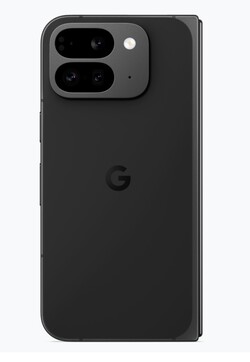
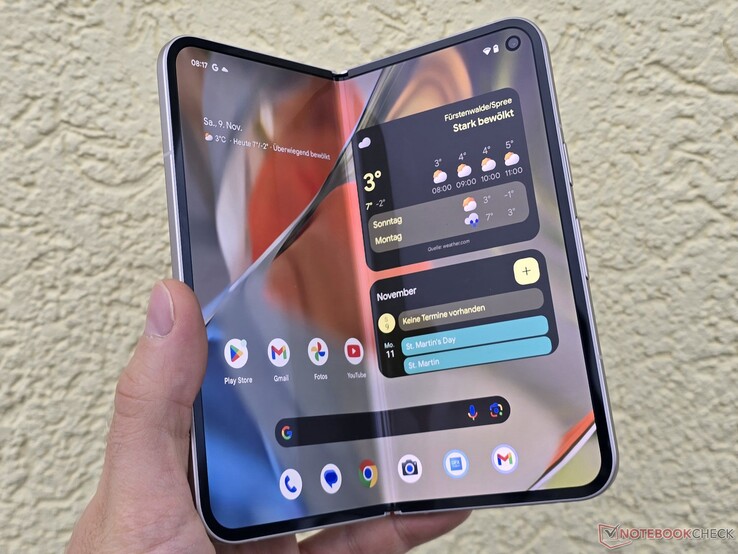





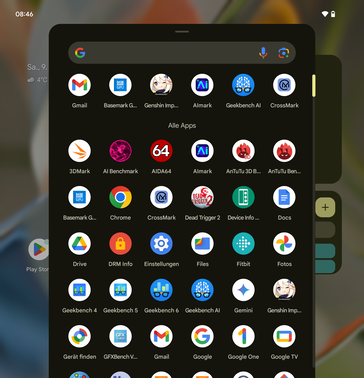
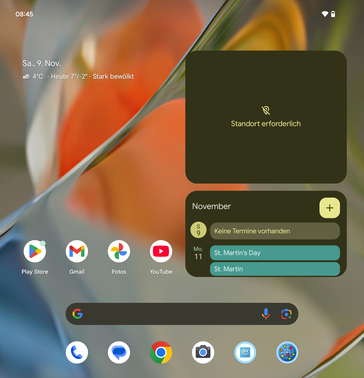
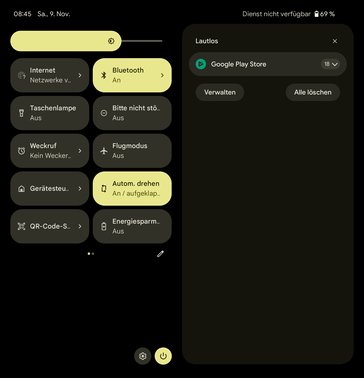
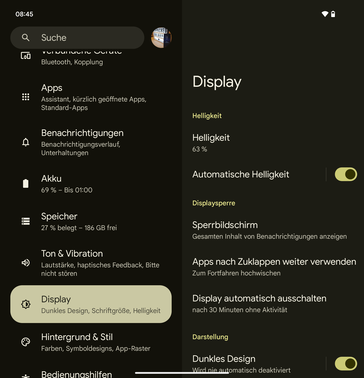
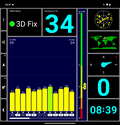
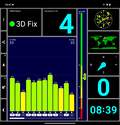

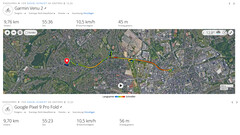

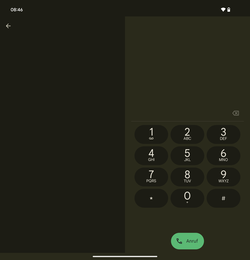









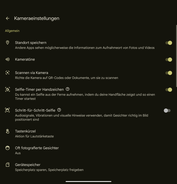
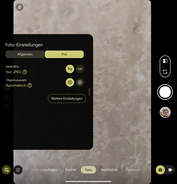
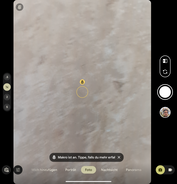
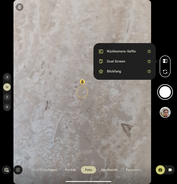

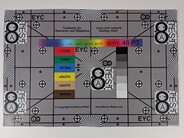



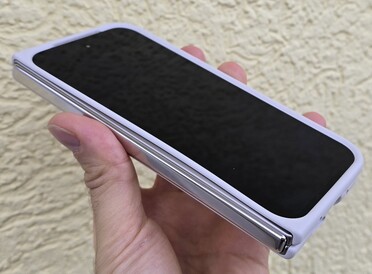
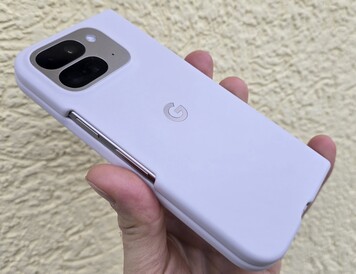
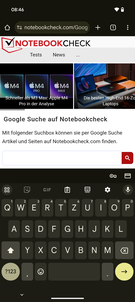
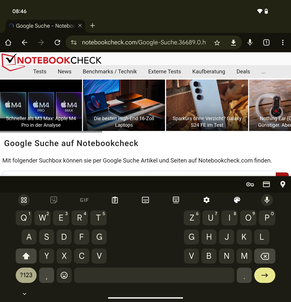
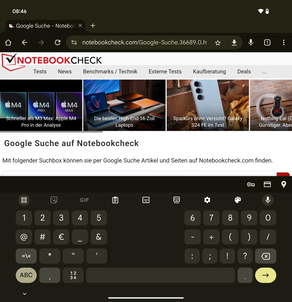
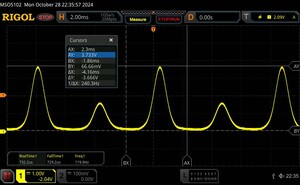





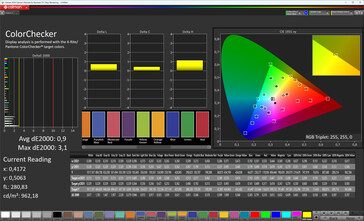
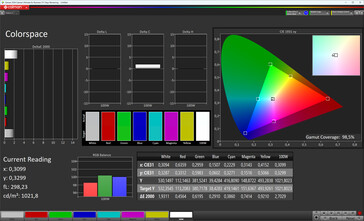
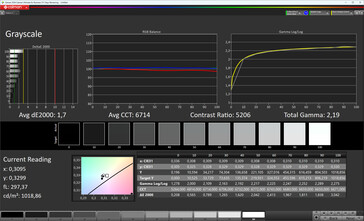
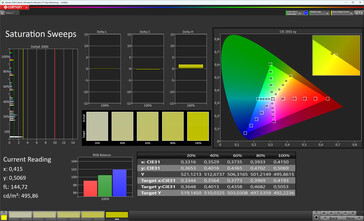
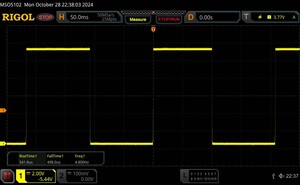
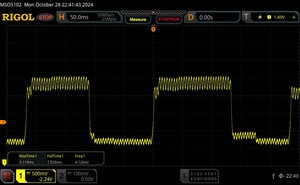

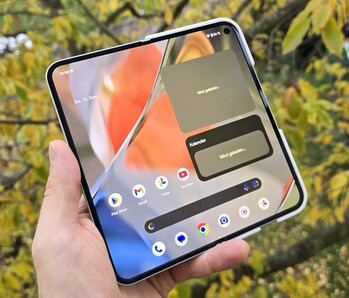
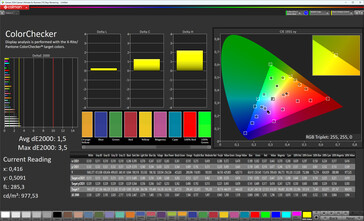
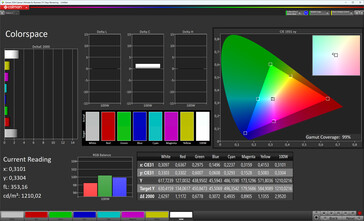
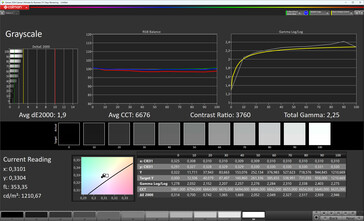
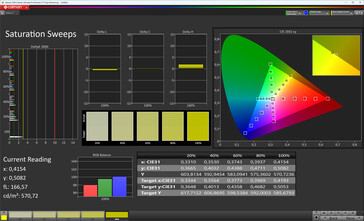





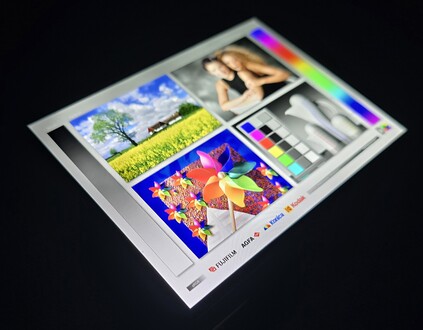
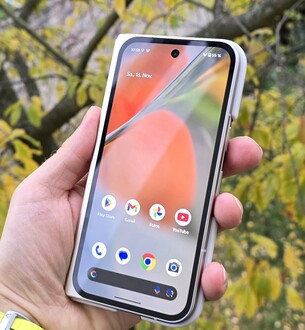

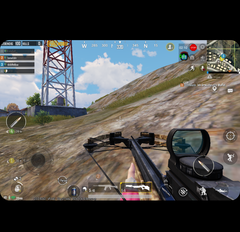

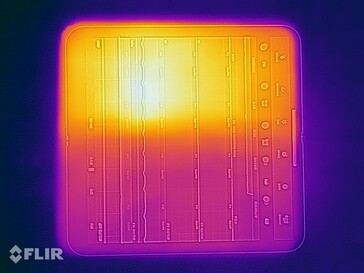
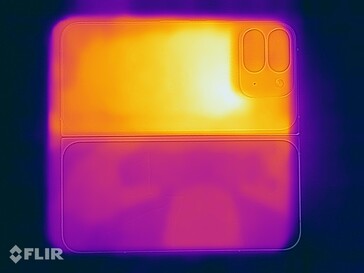
 Total Sustainability Score:
Total Sustainability Score: 
